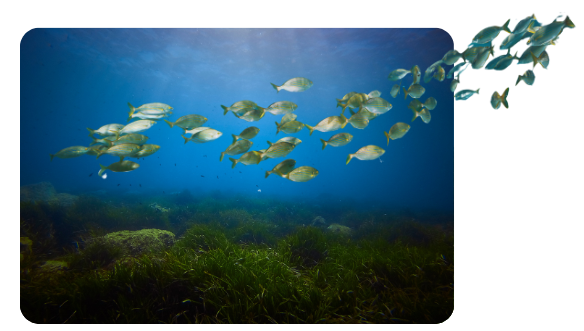Science Topic
Autonomous sampling
PML is working to progress the technological transition towards autonomous measurements and platforms to collect environmental and biological data using our fleet of autonomous ocean robots.
Autonomous measurements provide a cost-effective opportunity to study the marine environment in detail and provide a real opportunity to deliver a net-zero oceanographic capability. PML’s fleet includes a new 8.5 metre tall autonomous data buoy featuring a unique set of onboard sensors which will deliver invaluable high-resolution data to scientists working on the Western Channel Observatory. Where previous buoy systems only measured in surface waters, the new buoy will provide profiled datasets to deliver an unprecedented understanding of the waters surrounding Plymouth and their complex marine ecosystem.
Alongside the buoy, our futuristic fleet of ocean robots includes the PML Pioneer, a five-metre AutoNaut uncrewed surface vessel which is propelled by wave motion and powered by three hundred-watt solar panels. The PML Pioneer is one of only two of its kind in the UK and will be the only one regularly deployed in UK waters. The integrated scientific payload is the most advanced to be deployed from an AutoNaut and includes state-of-the-art chemical sensors, and a photosynthetic efficiency and rate sensor.
PML has also procured four autonomous underwater robots from ecoSUB robotics. Their sophisticated sensors are designed to provide crucial scientific data and the flotilla of new generation subs, the largest in the UK, is uniquely integrated together using acoustic underwater communications. This means the subs will be able to perform multi-vehicle synchronized surveys with accurate underwater positioning and can communicate with the PML Pioneer.
PML is developing an approach where computer models merging data from marine autonomous vehicles are being used to improve understanding and prediction of shelf seas. The model outputs direct gliders towards areas of concern, such as algal blooms, to inform management decisions in real time. This was tested using a Slocum glider offering the opportunity to challenge methods of navigation and to observe the variability of the phytoplankton spring bloom in close detail.
The approach unites observational and modelling technologies, combining gliders, satellite observations and numerical models, using “data assimilation” techniques to improve characterisation of episodic events such as the spring bloom, harmful algal blooms and oxygen depletion. This means that we can detecting small-scale features which are not easily captured by traditional methods but key to understanding ecosystem variability and quantifying good environmental status.
PML Projects
Resources and Links
PML leads Smart Sound Plymouth
Smart Sound Plymouth is Britain’s platform for innovative marine technology development and is led by Dr James Fishwick from PML. It is Britain’s premier proving area for designing, testing and developing cutting edge products and services for the marine sector, and is ideally suited for building and supporting the next generation of advanced marine technologies.





